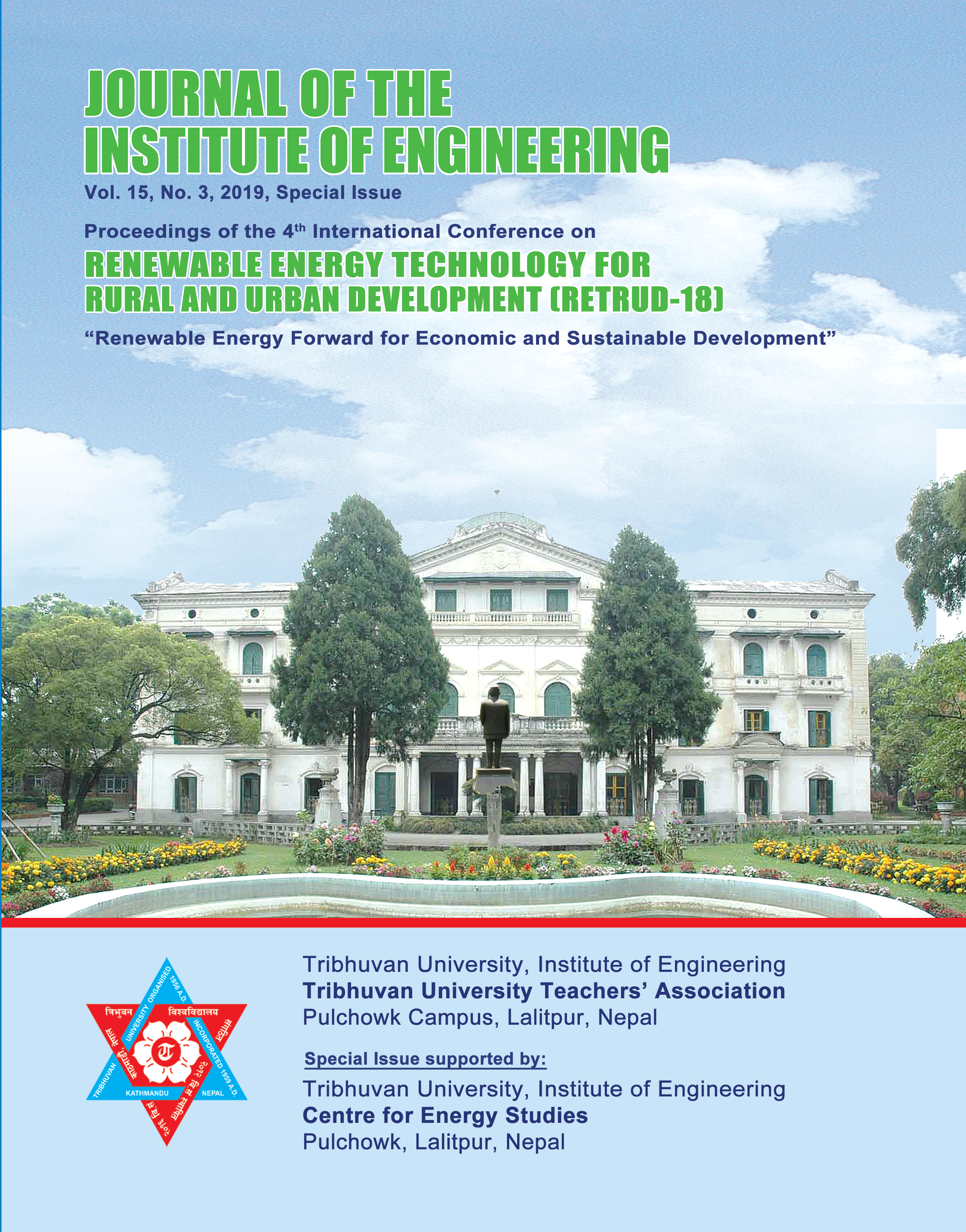Stakeholders’ Perception About the Effectiveness of Renewable Energy Subsidy in Nepal: A Review of Biogas Subsidy
DOI:
https://doi.org/10.3126/jie.v15i3.32225Keywords:
Renewable Energy, Renewable Energy Subsidy, Biogas, Energy SubsidyAbstract
Due to sustainability and climate change concerns associated with fossil fuels, renewable energy (RE) is increasingly being recognized as crucial link between energy access and sustainable development. Growing interest in RE has led many countries to adopt different strategies to promote its growth. Subsidy in various forms is one of the common measures governments around the world have used to support the production and to encourage the use of RE technologies. Renewable energy sector in Nepal is also largely driven by RE subsidies, primarily targeted at potential users. While many argue that subsidy played a major role in the promotion and uptake of RETs, there is little knowledge on the differential impact RE subsidies have had on different stakeholders and actors in the RE sector. Knowledge about broader impact of RE subsidy, its relevance to different RETs and its effectiveness in achieving sustainability of the sector also remains largely fragmented. In order to devise strategies to overcome barriers in the development of RE sector in Nepal, it is important to fill these knowledge gaps. It is also important to better understand challenges and opportunities. To this end, this study uses qualitative research method to draw knowledge from different stakeholders about the effectiveness of renewable energy subsidy policy in Nepal. The primary focus of this study is biogas subsidy that has been in place since the 1990s. The study reveals that the effectiveness of RE subsidy is a function of various factors such as users’ awareness about RET benefits, government policy and provisions, cost-effectiveness of the technology, after-sales-services, long-term access to RE technologies and services etc. The general consensus is that RE subsidy so far has primarily benefited better-off households than the low-income populations. It was also revealed that, without subsidy or some kind of financial intermediation, access of poor farmers to biogas technology is likely to remain a challenge. The high upfront cost of the technology was frequently cited as one of the biggest barriers in the market-led dissemination of biogas technology (particularly the one being promoted by the Government of Nepal). This highlights the need for improvement in resource (land, raw material for its construction and operation) and cost efficiency of the technology for it to remain economically viable for farming communities, to whom the technology might have the greatest utility. Better measures and communication strategy are needed to make targeted subsidies and relevant information about policy mandates and provision accessible to the grass roots.
Downloads
Downloads
Published
How to Cite
Issue
Section
License
The Copyright is held by Journal of the Institute of Engineering, IOE, TU




